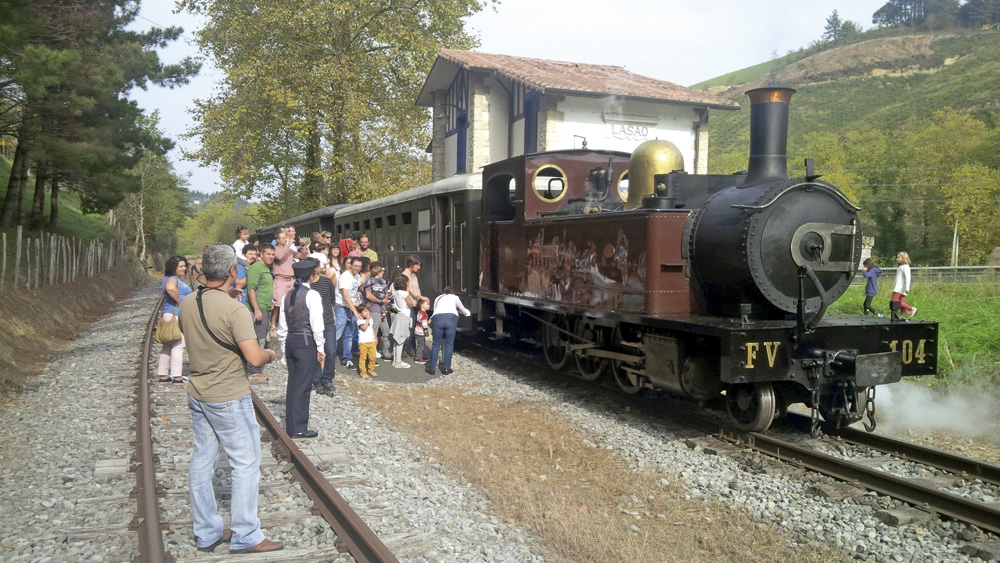
- The Azpeitia City Hall www.azpeitibizi.eus has launched a new website to help families. It is a tool for attracting tourism to the people, a starting point for a process that aims to be long. The City Hall has made the following reflection: the priority is economic promotion and tourism is one of the ways to do this. However, how will it affect the promotion of tourism to the Basque municipality? How to bring visitors without losing their identity?

In Azpeitia, the economic crisis has hit the population hard, with unemployment of 17% in 2013. It is currently 10%. In the Urola valley there are fewer unemployed, but the City Hall wants to improve the situation even further. The priority is the promotion of the economy, and among other things, they want to promote tourism. Currently, the municipality has two important tourist centers, the Loiola Shrine and the Basque Railway Museum. They want to attract more visitors, but not in any way. Azpeitia is a Basque municipality. It is the most Basque in the world among the populations of over 10,000 inhabitants. The measurement of street use in 2016 indicates that 81.9% do so in Euskera. In 2009, 86% of the CAV population was in Basque. Azpeitia will be one of the peoples in which the Hitan, who is weaker than the former, will speak the most. According to the first measurement of the street, 18.1% of the population of the Basque Country has hika. In other words, the Basque people are very strong, but that does not mean that these Basque peoples are not fragile. In recent years, the knowledge and use of Euskera in the most Euskaldunes of the Basque Country have declined. Tourism can accelerate the decline.
Josu Labaka is a cultural councillor of the Municipality of Azpeitia and president of the Commonwealth of Basque Municipalities (UEMA). This explains the relationship between tourism and the Basque municipality: “The City Council’s reflection is based on this concern or risk. And the question is what we do or what we're going to do about it. We cannot hide, tourism has risks, but also opportunities, it has benefits, economic benefits. Today there is a risk of satanizing tourism, but beyond what is called mass tourism, if you do another type of tourism, it has a positive impact on the socioeconomic development of the people”.
The Azpeitia City Hall is clear that it does not want to lose the identity of people, and when it says that it is a people it puts the Azpeitiars in the centre, the Basque Country, the Basque culture, a living people. On the one hand, they are reflecting on the defense of identity, but they are also convinced that this very identity is a lure for visitors: “We don’t have to hide our own and explain it in another way out.” In the window you can see an Basque people, both for foreigners and for those who want to live in Basque. May the Basques know that they will have the opportunity to visit and live Azpeitia in Basque.
www.azpeitibizi.eus
The web is the starting point of the Azpeitibizi project. Among other things, it has the section Come to Onera, come to Azpeitia. Azpeitiarras are the protagonists of this episode in which their testimonies are shown through several videos. On the other hand, in the Azpeiti gogogoan section ', contents on places, people and known historical facts of the locality have been collected. In addition, the tours around Azpeitia, the list of accommodations for sleeping, eating and drinking, as well as basic services have been collected. The website is available only in Basque. It is clear that in the first coup they want to attract the Basques. Later on they have stopped translating into other languages.
Tourism and Language Working Group
Not much thought has been given to the sharing of the two issues. In the Commonwealth of Basque Municipalities, a few months ago, the working group that links tourism and language has started to work and the Municipality of Azpeitia has drunk from that reflection n.Se can say that the Azpeitia is the first experience, the intention of UEMA is to continue working on the subject and expand some proposals to the municipalities of the Community.